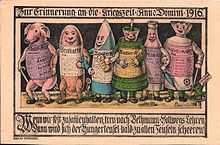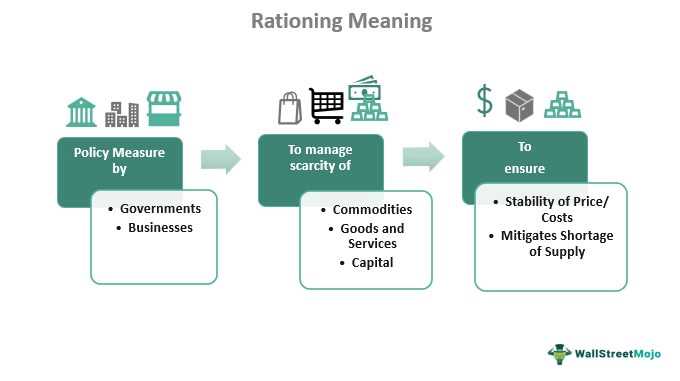Rationing: What It Is, Why It’s Used, and a Historical Example

Rationing is a system that is used to distribute limited resources or goods among a population in a fair and equitable manner. It is typically implemented during times of scarcity, such as during wars, natural disasters, or economic crises. The goal of rationing is to ensure that everyone has access to essential items, even when supplies are limited.
Rationing is used for several reasons. Firstly, it helps to prevent hoarding and price gouging, which can occur when there is a shortage of goods. By implementing a rationing system, the government can control the distribution of resources and prevent individuals or businesses from taking advantage of the situation for personal gain.
Secondly, rationing ensures that essential items are distributed fairly. In times of scarcity, it is important to prioritize the needs of the population and ensure that everyone has access to basic necessities. Rationing helps to prevent certain groups or individuals from monopolizing resources, and instead, ensures that everyone receives a fair share.
Lastly, rationing can also be used as a means of conserving resources. During times of crisis, it may be necessary to limit the consumption of certain goods in order to ensure their availability for a longer period of time. Rationing can help to manage demand and prevent the depletion of resources, allowing them to be used more efficiently.
A historical example of rationing is the system implemented during World War II. Due to the war effort, many goods and resources were redirected towards military use, leading to shortages in civilian supplies. To ensure that everyone had access to essential items, governments implemented rationing programs. Ration books were issued to individuals, which contained coupons that could be exchanged for limited quantities of goods such as food, clothing, and fuel. This system helped to ensure that resources were distributed fairly and that everyone had access to basic necessities during a time of scarcity.
Rationing is a system implemented by governments to distribute limited resources or goods fairly among the population during times of scarcity or crisis. It is a way to ensure that everyone has access to essential items, such as food, fuel, or medical supplies, when there is not enough to meet the demand.
The concept of rationing is based on the principle of equitable distribution. Instead of allowing a free market to determine the allocation of resources, rationing sets limits on the amount individuals can consume or purchase. This ensures that everyone receives a fair share, regardless of their wealth or social status.
Rationing can be implemented in various ways. One common method is through the use of ration coupons or vouchers. These coupons are issued to individuals or households, entitling them to a specific amount of a particular resource. For example, during World War II, the British government issued ration books to its citizens, which contained coupons for food, clothing, and other essential items. People could only purchase goods using these coupons, and once they were used up, they had to wait until the next ration period to receive more.
Rationing is often implemented during times of war, natural disasters, or economic crises. It helps to manage scarce resources and prevent panic buying or hoarding, which can exacerbate shortages. Rationing also promotes social cohesion and solidarity by ensuring that everyone has an equal opportunity to obtain essential goods.
| Advantages of Rationing | Disadvantages of Rationing |
|---|---|
| – Ensures equitable distribution | – Can lead to black market activities |
| – Prevents hoarding and panic buying | – Requires extensive administrative efforts |
| – Maintains social cohesion | – Limits individual freedom of choice |
| – Controls prices to prevent price gouging | – Can be perceived as intrusive by some |
Overall, rationing is a temporary measure implemented to address specific challenges. It is a tool used by governments to ensure the fair distribution of limited resources and maintain social order during times of crisis. While it may have its drawbacks, rationing plays a crucial role in managing scarcity and protecting the well-being of the population.
Reasons for Implementing Rationing
Rationing is a system that is implemented by governments in times of scarcity or crisis to ensure fair distribution of essential resources among the population. There are several reasons why rationing may be implemented:
1. Limited Supply
One of the main reasons for implementing rationing is when there is a limited supply of a particular resource. This could be due to natural disasters, war, economic instability, or other factors that disrupt the normal production and distribution of goods. Rationing helps to ensure that everyone has access to at least a minimum amount of the resource, preventing hoarding and ensuring that it is distributed fairly.
2. Price Control
Rationing can also be used as a means of controlling prices during times of inflation or economic crisis. By limiting the amount of a resource that individuals can purchase, the government can prevent price gouging and ensure that the resource remains affordable for all. This helps to stabilize the economy and protect vulnerable populations from being priced out of essential goods.
3. Equity and Social Justice

Rationing is often implemented to promote equity and social justice. In times of scarcity, certain groups may be more vulnerable to the effects of shortages, such as low-income individuals, the elderly, or those with medical conditions. Rationing helps to ensure that these groups are not disproportionately affected and have access to the resources they need to survive and thrive.
4. National Security
A Historical Example of Rationing
During World War II, many countries implemented rationing systems to ensure that essential goods and resources were distributed fairly among the population. One notable example of rationing during this time was in the United Kingdom.
The rationing system in the UK was introduced in 1940 and lasted until 1954, four years after the end of the war. It was a response to the scarcity of goods caused by the war effort and the need to prioritize resources for the military. The government implemented a system of ration books, which were issued to every individual and contained coupons that could be exchanged for a limited amount of essential items.
The rationing system covered a wide range of goods, including food, clothing, and fuel. Each person was allocated a certain amount of each item, and they could only purchase those items with the corresponding coupons from their ration books. This ensured that everyone had access to a minimum level of essential goods, regardless of their income or social status.
Food rationing was particularly strict in the UK during this time. Items such as meat, butter, sugar, and eggs were heavily restricted, and people had to rely on alternative sources of nutrition, such as vegetables and bread. The government also encouraged people to grow their own food through the “Dig for Victory” campaign, which promoted home gardening as a way to supplement the limited rations.
While rationing was initially met with resistance and frustration, it eventually became an accepted part of daily life for the British population. People learned to adapt their cooking and shopping habits to make the most of the limited resources available to them. Rationing also had unintended positive effects, such as reducing food waste and promoting a sense of community as people shared and traded rationed items.

Emily Bibb simplifies finance through bestselling books and articles, bridging complex concepts for everyday understanding. Engaging audiences via social media, she shares insights for financial success. Active in seminars and philanthropy, Bibb aims to create a more financially informed society, driven by her passion for empowering others.
